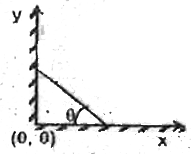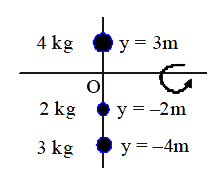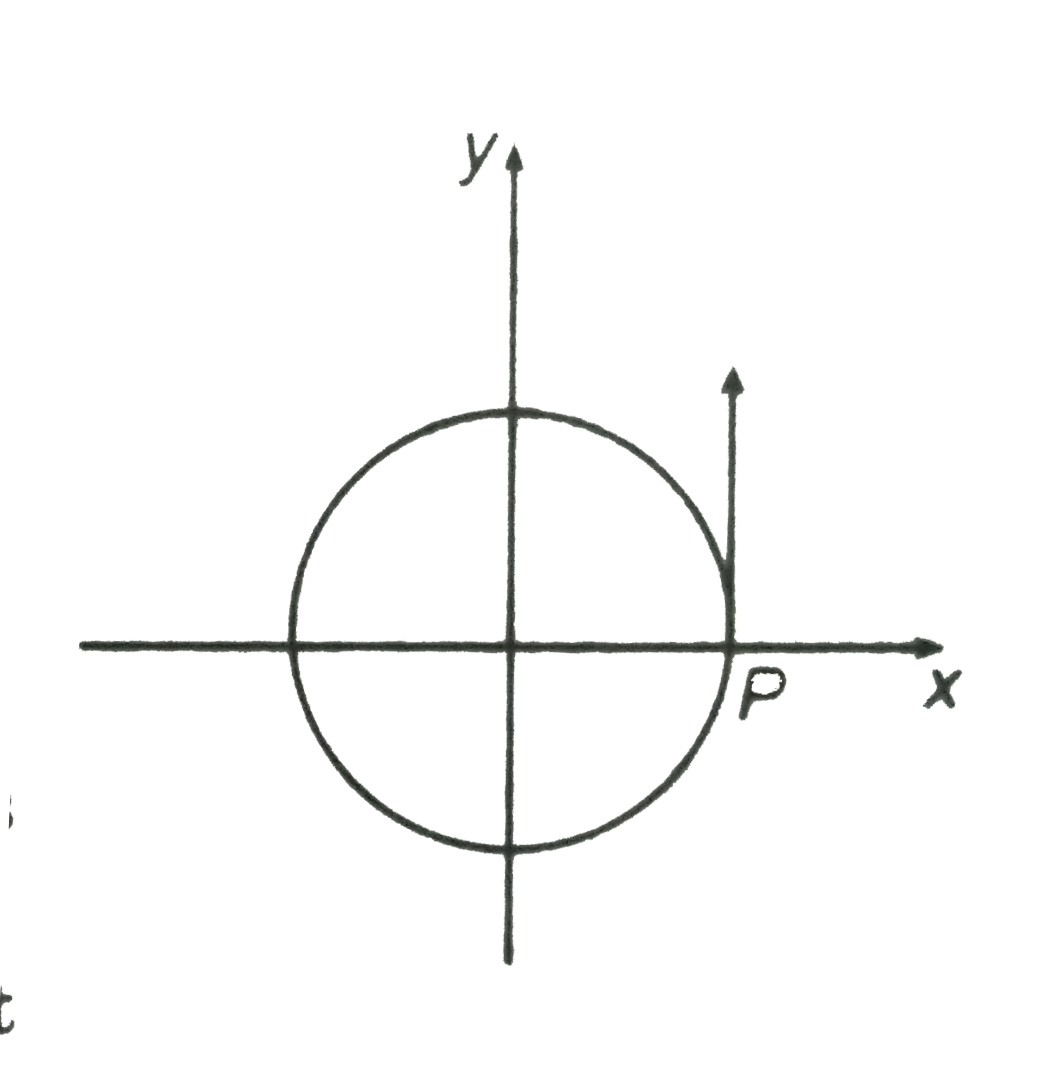A theif is running with speed of 10m/s along the line y=10m. The x−y plane is horizontal. A searchlight kept at the origin is always aimed at the theif. To do so its has to be continuosly rotated with some angular speed om≥a. When the line joining the thief with origin is making an angle θ=45∘ with the y axis, the value of ω is
1rad/s
2rad/s
14rad/s
12rad/s
Step by step video & image solution for A theif is running with speed of 10m//s along the line y=10m. The x-y plane is horizontal. A searchlight kept at the origin is always aimed at the theif. To do so its has to be continuosly rotated with some angular speed omgea. When the line joining the thief with origin is making an angle theta=45^(@) with the y axis, the value of omega is by Physics experts to help you in doubts & scoring excellent marks in Class 12 exams.
Updated on:21/07/2023Topper's Solved these Questions
- SYSTEM OF PARTICLES AND ROTATIONAL MOTIONBOOK - AAKASH INSTITUTECHAPTER - SYSTEM OF PARTICLES AND ROTATIONAL MOTIONEXERCISE - Assignment (Section - C) Objective Type Questions (More than one option are correct)
28 Videos
- SYSTEM OF PARTICLES AND ROTATIONAL MOTIONBOOK - AAKASH INSTITUTECHAPTER - SYSTEM OF PARTICLES AND ROTATIONAL MOTIONEXERCISE - Assignment (Section - D) Linked Comprehension Type Questions
20 Videos
- SYSTEM OF PARTICLES AND ROTATIONAL MOTIONBOOK - AAKASH INSTITUTECHAPTER - SYSTEM OF PARTICLES AND ROTATIONAL MOTIONEXERCISE - Assignment (Section - A) Objective Type Questions (One option is correct)
62 Videos
- SEMICONDUCTOR ELECTRONICS: MATERIALS, DEVICES AND SIMPLE CIRCUITSBOOK - AAKASH INSTITUTECHAPTER - SEMICONDUCTOR ELECTRONICS: MATERIALS, DEVICES AND SIMPLE CIRCUITSEXERCISE - Assignment (Section-D (Assertion and reason))
5 Videos
- TEST 1BOOK - AAKASH INSTITUTECHAPTER - TEST 1EXERCISE - EXERCISE
9 Videos
Similar Questions
If the slope of the line through the origin which is tangent to the curve y=x3+x+10 is m, then the value of m−12 is
View SolutionA light rigid rod of length l is constrained to move in a vertical plane, so that its ends are along the x and y axes respectively. Find the instantaneous axis of rotation of the rod when it makes an angle θ with horizontal.

View Solution
Knowledge Check
A particle of mass 5g is moving with a uniform speed of 3√2cm/s in the x−y plane along the line y=x+4. The magnitude of its angular momentum about the origin in gcm2/s is
AzeroB30C3√2D60A particle of mass 10 kg is moving with a uniform speed of 6m/sec, in x-y plane along the line 3y=4x+10 the magnitude of its angular momentum about the origin in kg2/s
AzeroB80C30√2D120A particle of mass 1kg is moving alogn the line y=x+2 with speed 2m/sec. The magnitude of angular momentum of the particle about the origin is
A4kg−m2/secB2√2kg−m2/secC4√2kg−m2/secD2kg−m2/sec
Three particles are connected by light, right rods lying along the y-axis. If the system rotates about the x-axis with an angular speed of 2 rad/s, the M.I. of the system is

View SolutionA train is moving with a constant speed of 10m/s in a circle of radius 16πm. The plane of the circle lies in horizontal x-y plane. At time t = 0, train is at point P and moving in counter- clockwise direction. At this instant, a stone is thrown from the train with speed 10m/s relative to train towards negative x-axis at an angle of 37∘ with vertical z-axis . Find
(a) the velocity of particle relative to train at the highest point of its
trajectory.
(b) the co-ordinates of points on the ground where it finally falls and that of the hightest point of its trajectory. (Take g =10m/s2,sin37∘=35

View SolutionA rod of length 13 metres has one end P on the X-axis and the other end Q on the y-axis. If P moves on the X-axis with a speed of 12 m/sec, then the speed of the other end Q when it is 12 m from the origin is
View SolutionA particle is moving with constant speed v along the line y = a in positive x -direction. Find magnitude of its angular velocity about orgine when its position makes an angle θ with x-axis.
View SolutionA particle moves along the parabola y=x2 in the first quadrant in such a way that its x-coordinate (measured in metres) increases at a rate of 10 m/sec. If the angle of inclination θ of the line joining the particle to the origin change, when x=3 m, at the rate of k rad/sec., then the value of k is
View Solution
